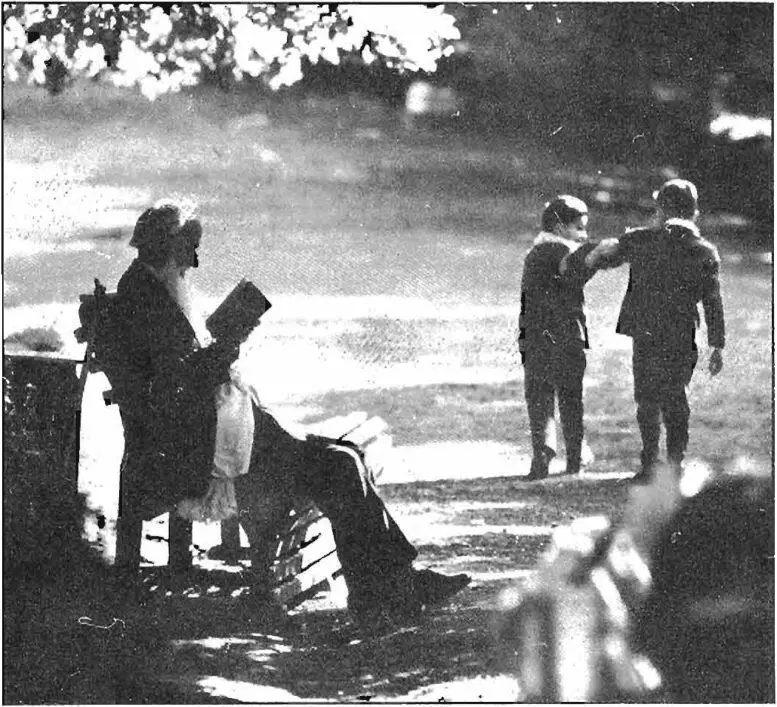Christopher alexander - A pattern language
Здесь есть возможность читать онлайн «Christopher alexander - A pattern language» весь текст электронной книги совершенно бесплатно (целиком полную версию без сокращений). В некоторых случаях можно слушать аудио, скачать через торрент в формате fb2 и присутствует краткое содержание. Жанр: Прочая научная литература, на английском языке. Описание произведения, (предисловие) а так же отзывы посетителей доступны на портале библиотеки ЛибКат.
- Название:A pattern language
- Автор:
- Жанр:
- Год:неизвестен
- ISBN:нет данных
- Рейтинг книги:3 / 5. Голосов: 1
-
Избранное:Добавить в избранное
- Отзывы:
-
Ваша оценка:
- 60
- 1
- 2
- 3
- 4
- 5
A pattern language: краткое содержание, описание и аннотация
Предлагаем к чтению аннотацию, описание, краткое содержание или предисловие (зависит от того, что написал сам автор книги «A pattern language»). Если вы не нашли необходимую информацию о книге — напишите в комментариях, мы постараемся отыскать её.
A pattern language — читать онлайн бесплатно полную книгу (весь текст) целиком
Ниже представлен текст книги, разбитый по страницам. Система сохранения места последней прочитанной страницы, позволяет с удобством читать онлайн бесплатно книгу «A pattern language», без необходимости каждый раз заново искать на чём Вы остановились. Поставьте закладку, и сможете в любой момент перейти на страницу, на которой закончили чтение.
Интервал:
Закладка:
213
build housing three or four stories high, build a hill of houses. Build them to form stepped terraces, sloping toward the south, served by a great central open stair which also faces south and leads toward a common garden . . .
| parking underneath |  |
stepped terraces |
| central common stairs |
Let people lay out their own houses individually, upon the terraces, just as if they were land—your own home (79). Since each terrace overlaps the one below it, each house has its garden on the house below—roof gardens ( i 18). Leave the central stair open to the air, but give it a roof, in wet or snowy climates— perhaps a glass roof—open stairs (158) j and place the common land right at the bottom of the stair with playgrounds, flowers, and vegetables for everyone—common land (67 ),connected PLAY (68) , VEGETABLE GARDEN ( I77 ). . . .
214
40 OLD PEOPLE EVERYWHERE**

2 I 5
summary of the language
fix the position of individual buildings on the site, within the complex, one by one, according to the nature of the site, the trees, the sun: this is one of the most important moments in the language j
104. SITE REPAIR
105. SOUTH FACING OUTDOORS
106. POSITIVE OUTDOOR SPACE
107. WINGS OF LIGHT
108. CONNECTED BUILDINGS
109. LONG THIN HOUSE
within the buildings’ wings, lay out the entrances, the gardens, courtyards, roofs, and terraces: shape both the volume of the buildings and the volume of the space between the buildings at the same time—remembering that indoor space and outdoor space, yin and yang, must always get their shape together j
110. MAIN ENTRANCE
111. HALF-HIDDEN GARDEN I 12. ENTRANCE TRANSITION I 13. CAR CONNECTION
I 14. HIERARCHY OF OPEN SPACE I 15. COURTYARDS WHICH LIVE I 16. CASCADE OF ROOFS I 17. SHELTERING ROOF I I 8. ROOF GARDEN
XXVI
. . . when neighborhoods are properly formed they give the people there a cross section of ages and stages of development—identifiable NEIGHBORHOOD(14), LIFE CYCLE(26), HOUSEHOLD MIX(35)) however, the old people are so often forgotten and left alone in modern society, that it is necessary to formulate a special pattern which underlines their needs.
Old people need old people, but they also need the young, and young people need contact with the old.
There is a natural tendency for old people to gather together in clusters or communities. But when these elderly communities are too isolated or too large, they damage young and old alike. The young in other parts of town, have no chance of the benefit of older company, and the old people themselves are far too isolated.
Treated like outsiders, the aged have increasingly clustered together for mutual support or simply to enjoy themselves. A now familiar but still amazing phenomenon has sprung up in the past decade: dozens of good-sized new towns that exclude people under 65. Built on cheap, outlying land, such communities offer two-bedroom houses starting at $18,000 plus a refuge from urban violence . . . and generational pressures. ( Time , August 3, 1970.)
But the choice the old people have made by moving to these communities and the remarks above are a serious and painful reflection of a very sad state of affairs in our culture. The fact is that contemporary society shunts away old people; and the more shunted away they are, the deeper the rift between the old and young. The old people have no choice but to segregate themselves —they, like anyone else, have pride; they would rather not be with younger people who do not appreciate them, and they feign satisfaction to justify their position.
And the segregation of the old causes the same rift inside each individual life: as old people pass into old age communities their ties with their own past become unacknowledged, lost, and there-
21640 OLD PEOPLE EVERYWHERE
fore broken. Their youth is no longer alive in their old age—the two become dissociated; their lives are cut in two.
In contrast to the situation today, consider how the aged were respected and needed in traditional cultures:
Some degree of prestige for the aged seems to have been practically universal in all known societies. This is so general, in fact, that it cuts across many cultural factors that have appeared to determine trends in other topics related to age. (The Role of Aged in Primitive Society , Leo W. Simmons, New Haven: Yale University Press, 1945, p. 69.)
More specifically:
. . . Another family relationship of great significance for the aged has been the commonly observed intimate association between the very young and the very old. Frequently they have been left together at home while the able-bodied have gone forth to earn the family living. These oldsters, in their wisdom and experience, have protected and instructed the little ones, while the children, in turn, have acted as the “eyes, ears, hands, and feet” of their feeble old friends. Care of the young has thus very generally provided the aged with a useful occupation and a vivid interest in life during the long dull days of senescence. (Ibid. p. 199.)
Clearly, old people cannot be integrated socially as in traditional cultures unless they are first integrated physically—unless they share the same streets, shops, services, and common land with everyone else. But, at the same time, they obviously need other old people around them; and some old people who are infirm need special services.
And of course old people vary in their need or desire to be among their own age group. The more able-bodied and independent they are, the less they need to be among other old people, and the farther they can be from special medical services. The variation in the amount of care they need ranges from complete nursing care; to semi-nursing care involving house calls once a day or twice a week; to an old person getting some help with shopping, cooking, and cleaning; to an old person being completely independent. Right now, there is no such fine differentia-
217
TOWNS
tion made in the care of old people—very often people who simply need a little help cooking and cleaning are put into rest homes which provide total nursing care, at huge expense to them, their families, and the community. It is a psychologically debilitating situation, and they turn frail and helpless because that is the way they are treated.
We therefore need a way of taking care of old people which provides for the full range of their needs:
1. It must allow them to stay in the neighborhood they know best—hence some old people in every neighborhood.
2. It must allow old people to be together, yet in groups small enough not to isolate them from the younger people in the neighborhood.
3. It must allow those old people who are independent to live independently, without losing the benefits of communality.
4. It must allow those who need nursing care or prepared meals, to get it, without having to go to nursing homes far from the neighborhood.
All these requirements can be solved together, very simply, if every neighborhood contains a small pocket of old people, not concentrated all in one place, but fuzzy at the edges like a swarm of bees. This will both preserve the symbiosis between young and old, and give the old people the mutual support they need within the pockets. Perhaps 20 might live in a central group house, another 10 or 15 in cottages close to this house, but interlaced with other houses, and another 10 to 15 also in cottages, still further from the core, in among the neighborhood, yet always within 100 or 200 yards of the core, so they can easily walk there to play chess, have a meal, or get help from the nurse.
Читать дальшеИнтервал:
Закладка:
Похожие книги на «A pattern language»
Представляем Вашему вниманию похожие книги на «A pattern language» списком для выбора. Мы отобрали схожую по названию и смыслу литературу в надежде предоставить читателям больше вариантов отыскать новые, интересные, ещё непрочитанные произведения.
Обсуждение, отзывы о книге «A pattern language» и просто собственные мнения читателей. Оставьте ваши комментарии, напишите, что Вы думаете о произведении, его смысле или главных героях. Укажите что конкретно понравилось, а что нет, и почему Вы так считаете.












